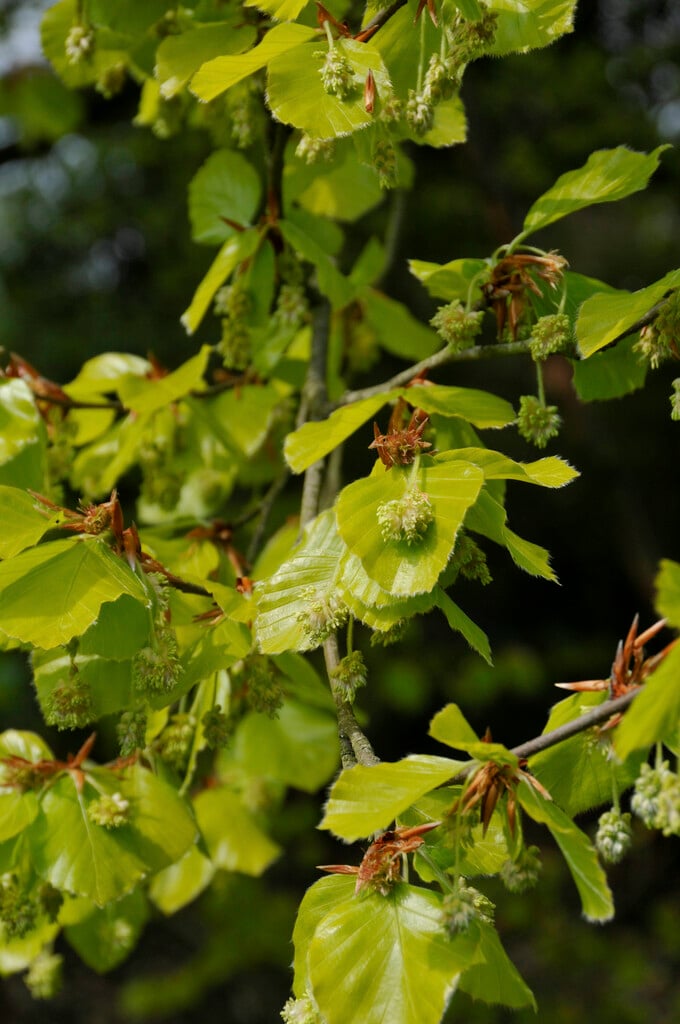Size
Ultimate height
Higher than 12 metresTime to ultimate height
20–50 yearsUltimate spread
Wider than 8 metresGrowing conditions
Moisture
Well–drainedpH
Acid, Alkaline, NeutralColour & scent
| Stem | Flower | Foliage | Fruit | |
| Spring | Green Yellow | |||
|---|---|---|---|---|
| Summer | Green | |||
| Autumn | Yellow Orange | |||
| Winter | Orange Brown |
Position
- Full sun
Aspect
East–facing or North–facing or South–facing or West–facing
Exposure
Exposed or Sheltered Hardiness
H5Botanical details
- Family
- Fagaceae
- Native to GB / Ireland
- No
- Foliage
- Deciduous
- Habit
- Columnar upright, Spreading branched
- Potentially harmful
- Pets (dogs): Harmful if eaten. For further information and contact numbers regarding pets, see the HTA guide to potentially harmful plants
- Genus
Fagus are large deciduous trees with smooth grey bark, ovate leaves colouring well in autumn, and inconspicuous flowers followed by usually spiny fruits
- Name status
Accepted
How to grow
Cultivation
Grow in any free-draining soil in full sun. Dislikes a dry atmosphere. For more advice see Beech cultivation
Propagation
Propagate by grafting
Suggested planting locations and garden types
- Architectural
- Hedging and screens
Pruning
Pruning group 1; or may be maintained as a hedge
Pests
May be susceptible to bark stripping by deer and rabbits when young, beech scale and beech red spider mite
Diseases
May be susceptible to fungi that cause beech heart rots and honey fungus
Love gardening
Sign up to receive regular gardening tips, inspiration, offers and more
View our Privacy Policy
Get involved
The Royal Horticultural Society is the UK’s leading gardening charity. We aim to enrich everyone’s life through plants, and make the UK a greener and more beautiful place.
